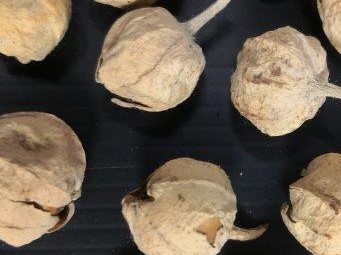FOR IMMEDIATE RELEASE

"Release of Fragrances from Cotton Functionalized with Carbohydrate-Binding Module Proteins"
ACS Applied Materials & Interfaces
Hot summer weather, stressful situations and intense workouts can produce unpleasant sweaty odors. But what if clothing could cover up these embarrassing smells with a burst of fragrance? Now, researchers have modified cotton fabric to emit a lemony citronella aroma upon contact with sweat. They report their body-odor-fighting strategy in ACS Applied Materials & Interfaces.
In recent years, scientists have developed smart fabrics that react to stimuli such as light, temperature or mechanical stress and respond in certain ways, such as by changing color or conducting an electrical signal. Researchers have also explored different methods to release fragrances from fabrics. Carla Silva, Artur Cavaco-Paulo and colleagues wanted to develop and compare two new strategies for releasing a fragrance –– β-citronellol, a lemongrass-derived scent used in some insect repellants –– from cotton fabric in response to sweat.
The first approach involved an odorant-binding protein (OBP) found in pigs’ noses that binds to β-citronellol and other scent molecules. To the OBP, the researchers attached a protein domain, called a carbohydrate-binding module (CBM), that binds to cotton. In their second strategy, the researchers packaged the fragrance in liposomes that displayed CBMs, which anchored the lipid carriers and their cargo to the fabric. The team exposed the modified cotton fabrics to an acidic sweat solution, and the low pH of the simulated perspiration caused the OBP and liposomes to release β-citronellol. Comparing the two strategies revealed that the OBP released a quick burst of scent, while the liposomes showed a slower, controlled release. The liposomes could also hold more fragrance than the other approach. The two strategies could prove useful for different clothing applications, the researchers say.
The authors acknowledge funding from the Portuguese Foundation for Science and Technology and the European Regional Development Fund.
Note: ACS does not conduct research, but publishes and publicizes peer-reviewed scientific studies.




